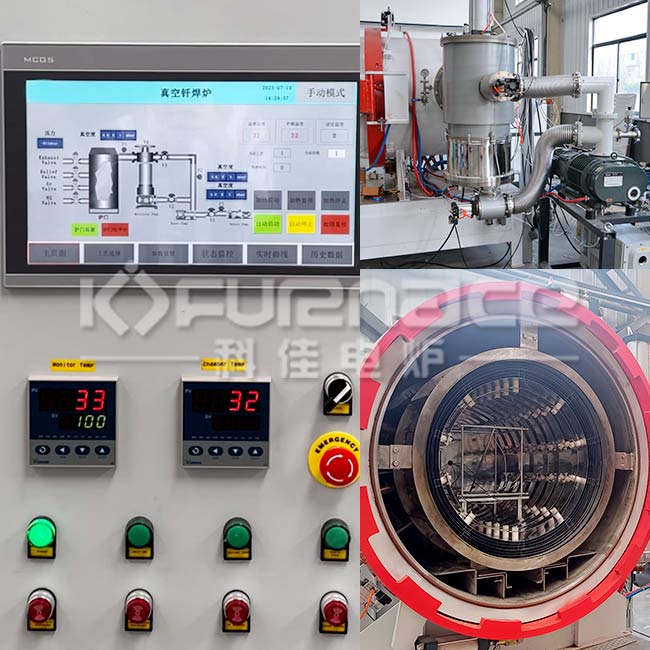Experimental vacuum furnaces have a wide range of applications in scientific research, teaching, and material testing. Let’s take a detailed look below!

Commonly used vacuum sintering furnaces (click on the image to view product details)
1. Metal heat treatment
Vacuum normalizing and tempering:
Application: Used for normalizing and tempering of metal materials such as cold and hot work mold steel, high-speed steel, elastic alloys, high-temperature alloys, stainless steel, titanium alloys, etc.
Advantages: In a vacuum environment, oxidation and decarburization of the material surface can be avoided, resulting in more uniform and stable microstructure and properties, and improving the hardness, wear resistance, and fatigue strength of the material.
Vacuum Annealing:
Application: Suitable for annealing treatment of metal materials such as stainless steel deep drawn parts, bearings, and cutting tools.
Advantages: Annealing under vacuum conditions can prevent surface oxidation of materials, maintain their smoothness, and improve their processing performance and internal structure.
2. Metal Connection and Surface Treatment
Vacuum brazing:
Application: Used for vacuum brazing of metal components such as aluminum alloy heat exchangers, stainless steel heat exchangers, oil coolers, stainless steel insulated cups, etc.
Advantages: Brazing under vacuum can avoid the formation of oxides, obtain high-quality welds, and improve the strength and sealing of welded joints.
3. Powder metallurgy and ceramic sintering
Vacuum sintering:
Application: Used for vacuum sintering of metal powders and ceramic powders to prepare dense metal parts and ceramic materials.
Advantage: The vacuum environment can prevent oxidation and contamination of the powder during the sintering process, resulting in high-quality sintered bodies.
Ceramic firing:
Application: Used for firing treatment of electronic ceramics, structural ceramics and other materials.
Advantages: The vacuum environment is conducive to the densification and homogenization of ceramic materials, improving their performance and reliability.
4. Material preparation and performance testing
Material performance testing:
Application: Used to test the physical and chemical properties of materials in high temperature and vacuum environments.
Advantage: The vacuum environment can simulate specific usage conditions and obtain accurate performance test results.
5. Teaching and Research
Teaching demonstration:
Application: Used for teaching demonstrations in materials science, metallurgical engineering and other related majors, helping students understand the process of metal heat treatment, welding, sintering and other processes.
Advantages: The vacuum furnace operation is intuitive, making it easy for students to observe and understand experimental phenomena.
Research experiment:
Application: Used for research and development of new materials, exploring the performance changes of materials in vacuum environment.
Advantage: The vacuum furnace provides a controllable vacuum heating environment, which is conducive to conducting in-depth scientific research experiments.
6. Other applications
Vacuum parts degassing:
Application: Used to remove gas inside electric vacuum parts, improve the vacuum performance and reliability of the parts.
Ceramic metal sealing:
Application: Used for sealing ceramic and metal materials, preparing high-performance composite materials.

Metal insulation screen experimental vacuum furnace (click on the picture to view product details)
Overall, experimental vacuum furnaces play an important role in various fields such as metal heat treatment, metal bonding and surface treatment, powder metallurgy and ceramic sintering, material preparation and performance testing, teaching and research. Its unique vacuum heating environment provides ideal experimental conditions for researchers and engineers, which is conducive to the development of materials science and engineering technology.Click to learn more Vacuum Furnaces! Or click on online customer service to learn more about product information!